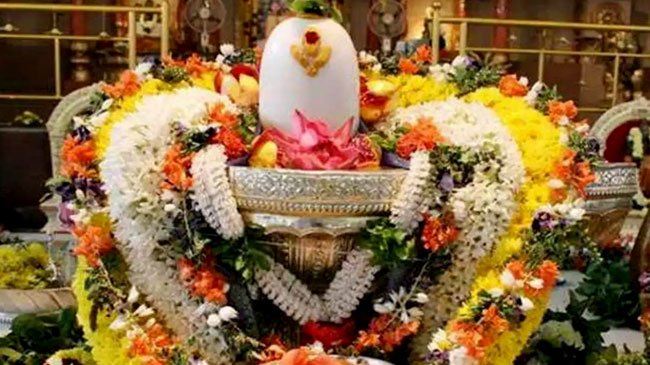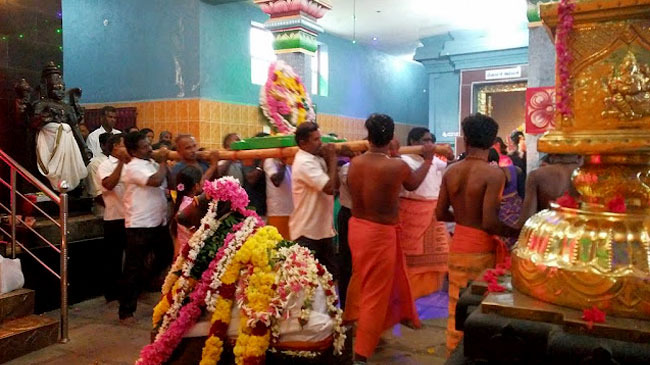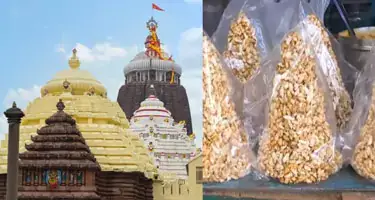Sani Pradosham is the time between one and a half hours before and after sunset. Pradosham is a combination of two words, "pra" and "dosham", in which "Pra" means "Removes" and "Dosham" means "sins", that is, the time that removes sins. The time between 4.30 PM and 6.00 PM is observed as Sani Pradosham. The smaller energy level Sani Pradosham occurs every day during this time window. Middle energy level Sani Pradosham occurs twice a month on the 13th day after a New and Full Moon.
A larger energy level, Sani Pradosham, occurs when one of the 13th moon days falls on a Saturday. This muhurtham comes every day. However, Pradosham time on trayodashi day is considered very auspicious. That too on the Krishna Paksha trayodashi (that falls on a dark fortnight or trayodashi before Amavasya). If the Pradosham falls on a Saturday, it is referred to as Sani Pradosham, which is considered even more auspicious and, this time, has immense importance in the Shaivite tradition.
About Sani Pradosham
If the Pradosham falls on a Saturday, it is referred to as Sani Pradosham, which is considered even more auspicious and, this time, has immense importance in the Shaivite tradition. God shiva saved the world from Halahala on a trayodashi on a Saturday. Thus, Sani trayodashi day got immense importance. Unlike Sani Pradosham, if the trayodashi pradosham falls on a Monday, it is referred to as Soma Pradosham. Similarly, Bhauma Pradosham on Tuesday, Saumya pradosham on Wednesday, and Guru Bhrugu and Bhanu pradoshams on Thursday, Friday and Sunday, respectively. Of all these, Sani and Soma pradoshams are considered very holy.
Rituals Of Sani Pradosham
Sani Pradosham vrat is the vrat to be taken on the trayodashi days to worship God Shiva. This vrat is usually done by fasting, worshipping and visiting the Shiva temple during the pradosham time of that day. Sani and soma pradosham vrats are considered very sacred. During the trayodashi days, the devotee who follows this vrat should take a head bath early in the morning and do fasting for the whole day and those who can not fast for the entire day can do till the pradosham time. The darshan, pooja, or worship that happens early in the morning (Pratah Kala) is considered auspicious. However, in temples of God Shiva, the pooja or darshan or worship that takes place during the evenings also have equal importance along with the morning ones. During this time, abhishekams are performed to Great God Shiva and Lord Rishabha or Nandi. Later, continues with the processions of Utsava Vigraham around the temple. The devotee needs to offer prayers to God Shiva, Goddess Parvati, Ganesha, Karthikeya, Nandi and other attendants of God Shiva. Also, the devotee must listen to or read the Pradosham vrat story as it is prescribed in the sacred texts. After visiting the temple or worshipping at home after pradosham, the devotee who does the vrat can eat any raw eatables like fruit
History Behind Sani Pradosham
The history of Sani Pradosham is related to Ksheera-Sagara Madhanam, or the churning of the milky ocean. Once, gods and demons started to churn the milky ocean to obtain the immortal nectar or Amrutha. During the churning process, a deadly poison named Halahala came out and destroyed whatsoever was present. After seeing the destruction caused by Halahala, the devas and asuras panicked and ran to the Kailasa, the abode of the Great god Shiva for help.
Looking at the plight and prayers of mercy by devas and asuras, the Great God Shiva moved and ordered Sundara, one of his attendants, to bring the halahala and gave him all the powers to do so. With the powers obtained, Sundara rolled all that dark poison into a small ball that looked similar to the Jamun fruit and brought it before the God Shiva. This is the reason why Sundara is usually called Halahalasundara.
halahala ball had burnt down everything near it. Also, unable to bear its immense heat, devas and other beings fled. Pitied by seeing this, Vrushabha deva, the bull of the god Shiva, protected them by giving shelter under his tongue by stretching it out. Great god Shiva then swallowed the Halahala, kept it in his throat, and protected all the worlds, and due to this action, God Shiva's throat became blue coloured. Hence the name Neelakantha- the one with blue throat. On gratitude, devas started offering their prayers to God Shiva, and then God Shiva said to them the one who protected them at first was his Vrushabha or Nandi, so they said to offer the same prayers to him too along with him. Vrushabha deva thanked God Shiva for his mercy on him. Then all the gods and other beings started worshipping God Shiva and Vrushabha deva simultaneously. The swallowing of Halahala by God Shiva, thereby protecting the devas, happened on a Triodasi day before sunset, specifically on a Saturday. That is why the Shani pradosham became very important, and it is the reason behind the worship of God Shiva and Nandi at once during this time. Hence, Shani prodasham is considered more auspicious, especially on Triodasi and Saturday. Also, the God Shiva then danced (Tandavam) by standing between the horns of Rishabha or Nandi and giving his blessings to all the beings. Pleased by this heavenly sight of God Shiva, all the gods praised in their interesting ways for his compassionate nature, like Goddess Saraswati playing the Veena, God Indra playing the flute, God Vishnu playing mridangam, Goddess Lakshmi by singing, God Brahma by cymbals and so on further obtaining the grace of Great God Shiva. Later, God Shiva also gave a boon that whoever worships him along with Rishabha or Nandi in this pradosham time will fulfil their wishes.
Benefits Of Sani Pradosham Pooja
Worshipping God Shiva along with God Rishabha or Nandi during the pradosham time or pradosham pooja will benefit immensely. It is believed to relieve their diseases and, mental disbalances, fears of death. It is also believed that the devotees will be uplifted from poverty by God's mercy and fulfil all their wishes.
Types Of Pradoshams
Pradoshams are mainly categorised into 4 types. They are:
- Nitya Pradosham – The Pradosham that comes daily.
- Paksha Pradosham – that comes every 15 days on trayodashi tithi.
- Masa Prodosham – That occurs on the 2nd trayodasi of the month.
- Varsha Pradosham – That comes every year before the day of Maha Shivratri.
- Yuga Pradosham or Pralaya Pradosham – The Pradosham that comes at the end of the yuga/ universe.






